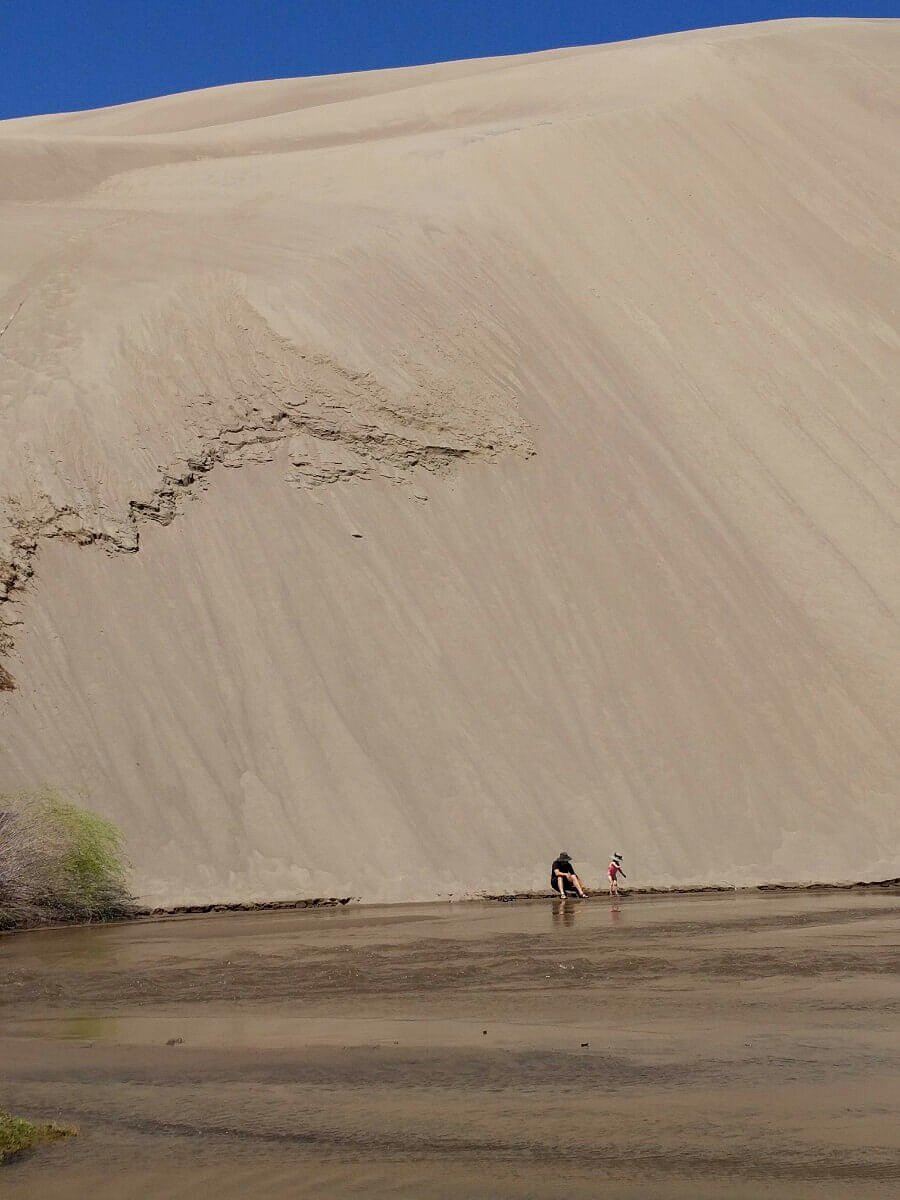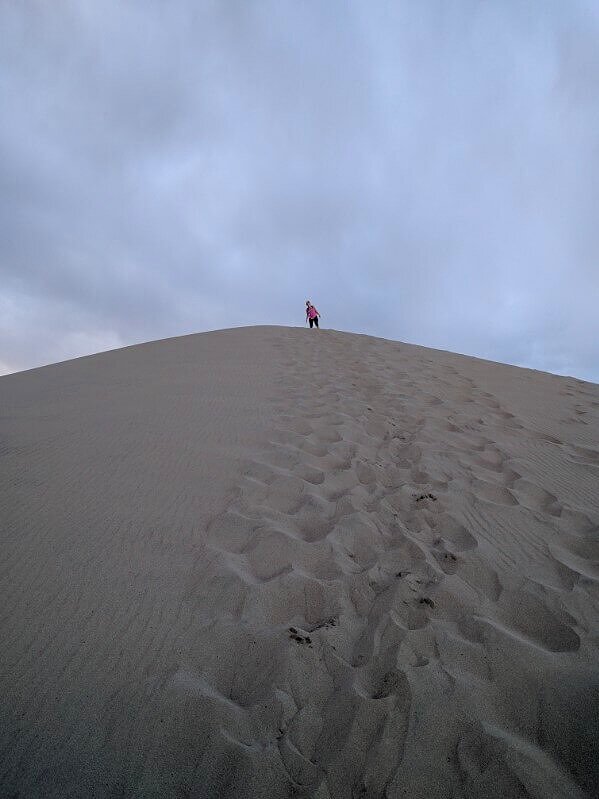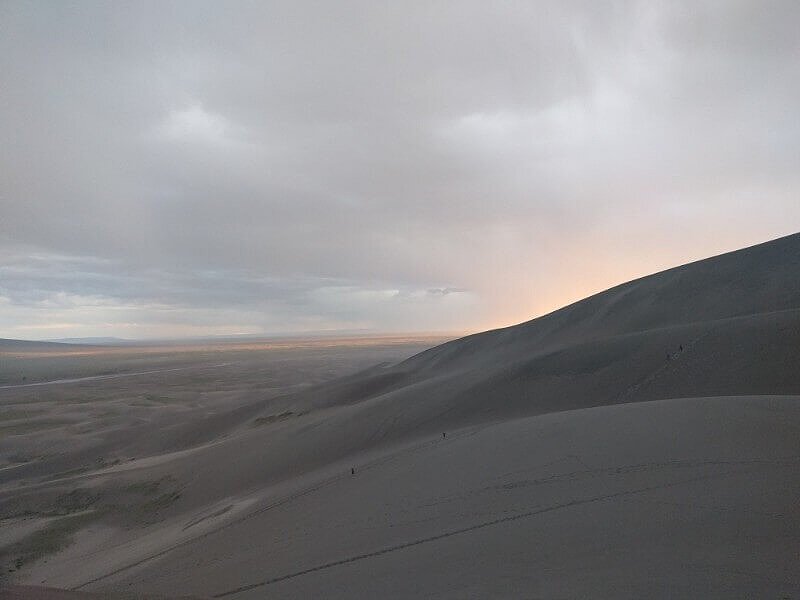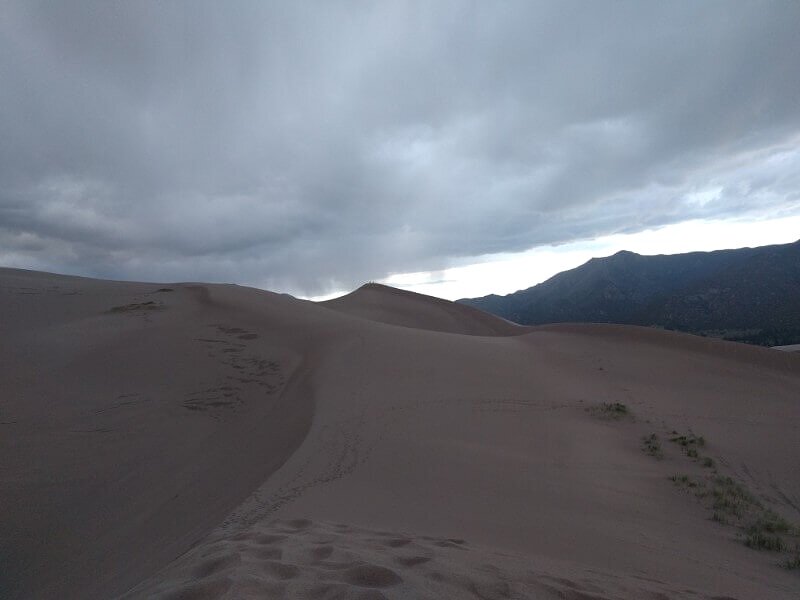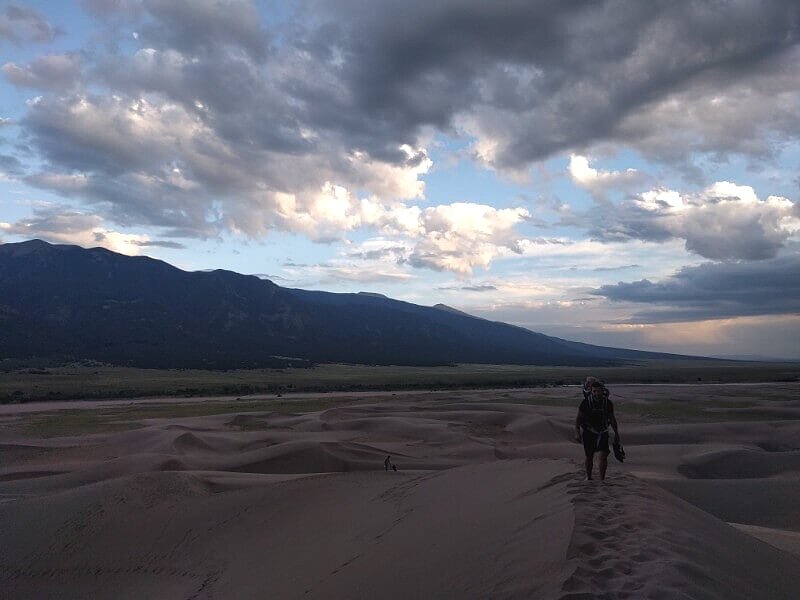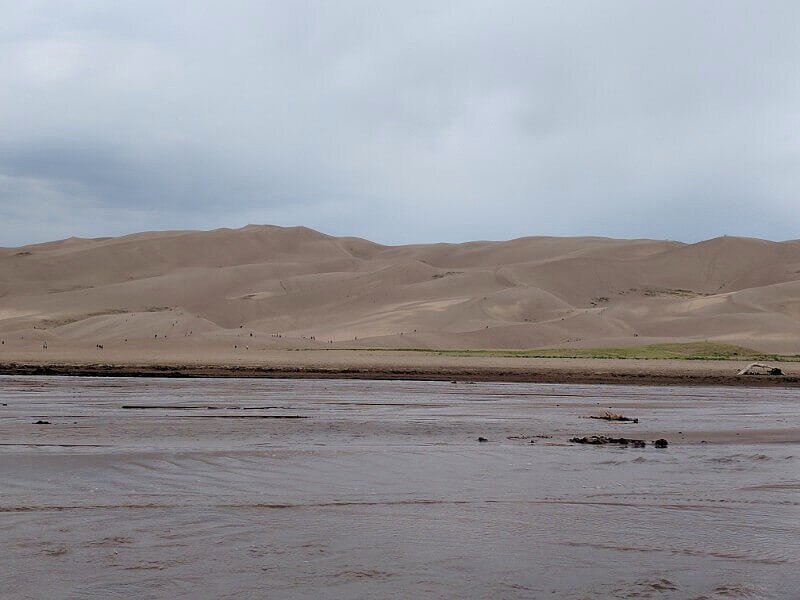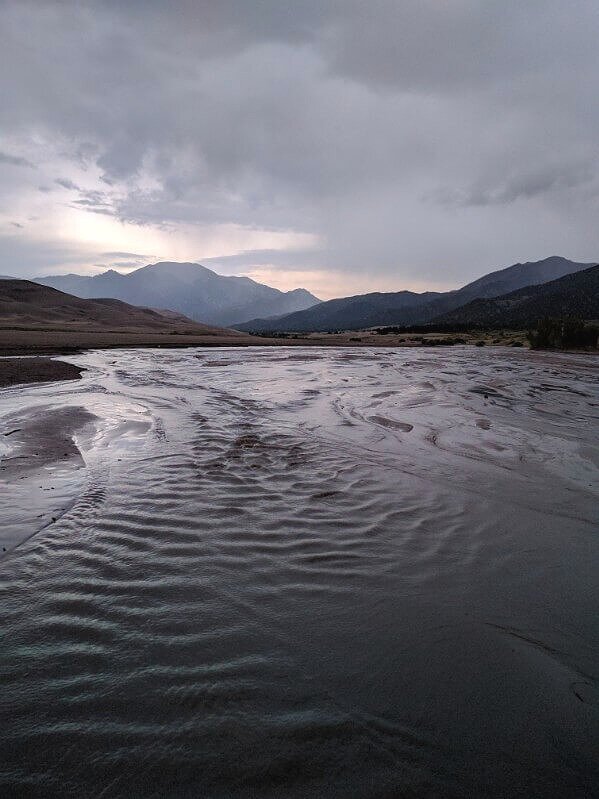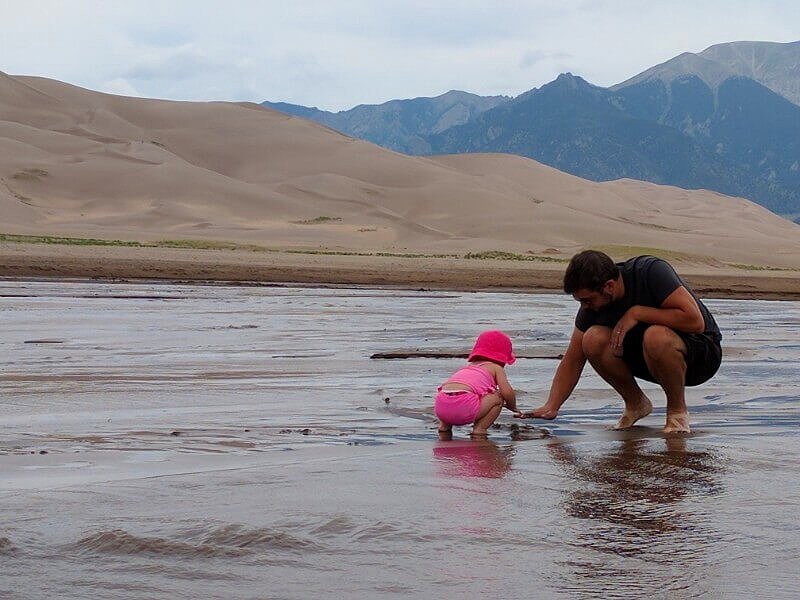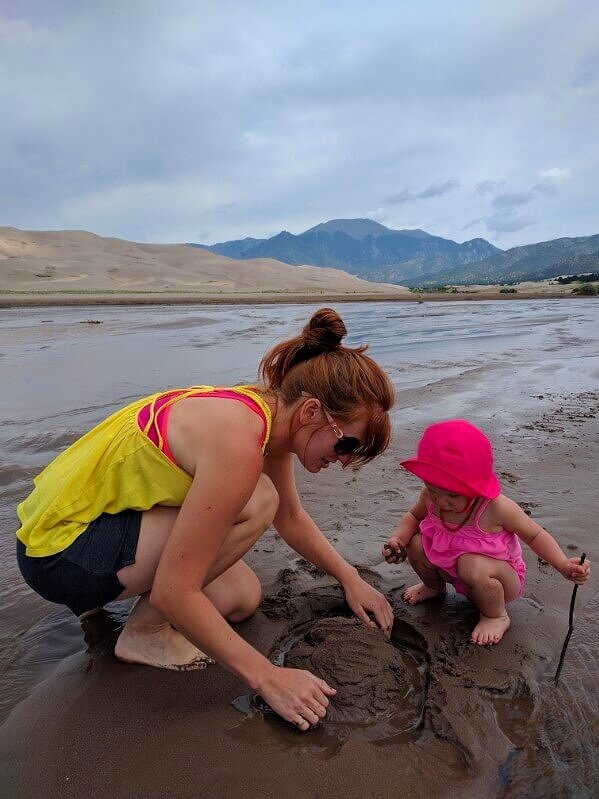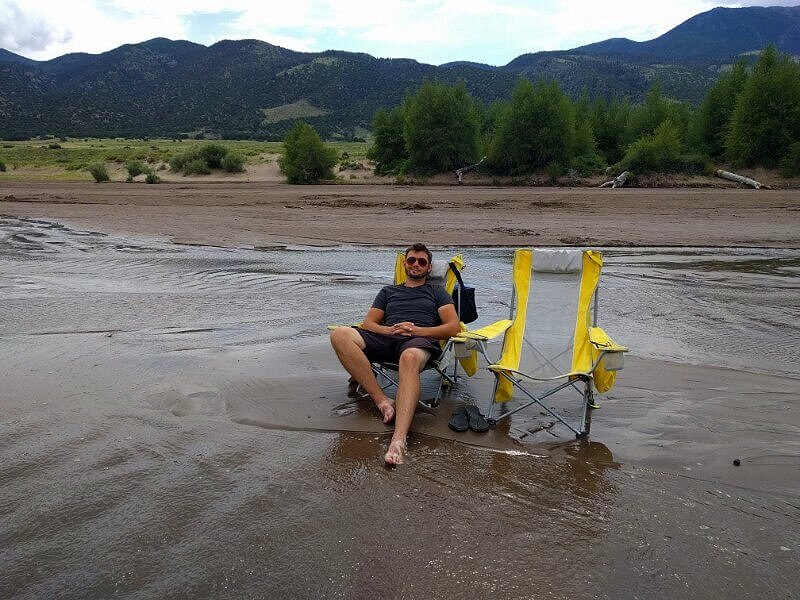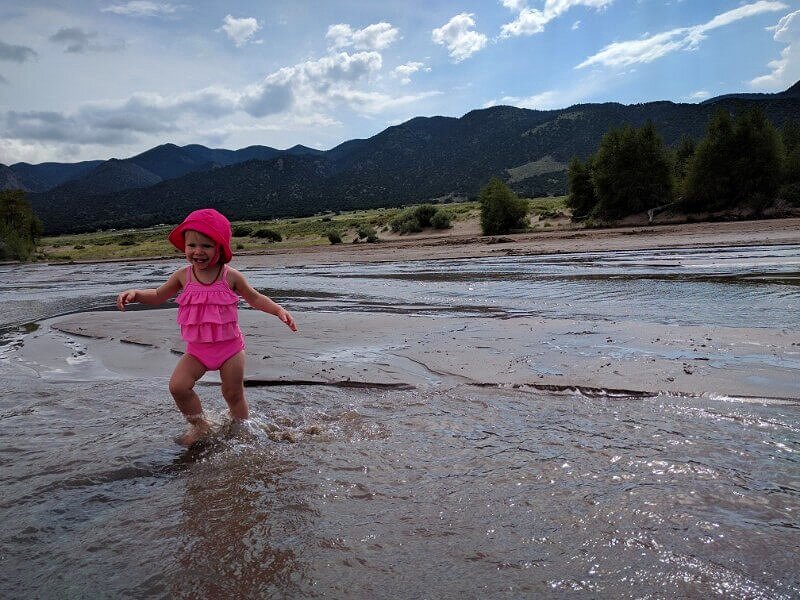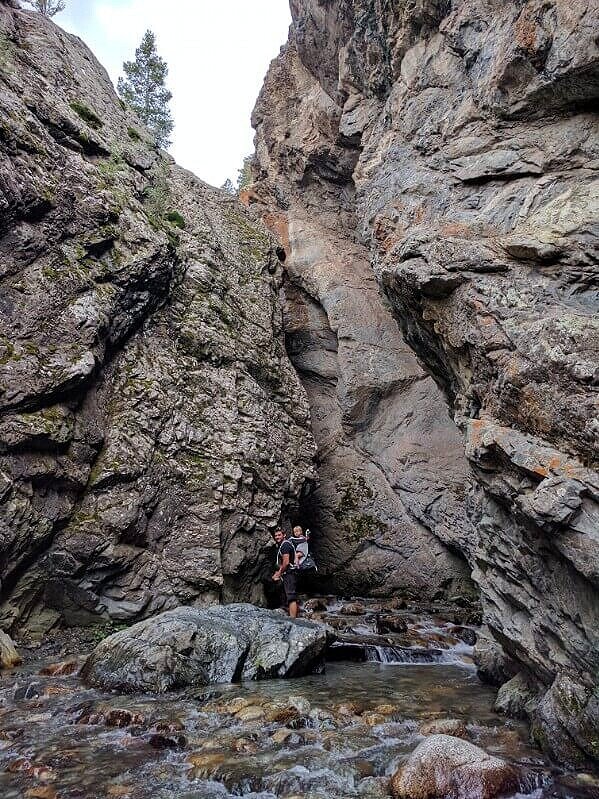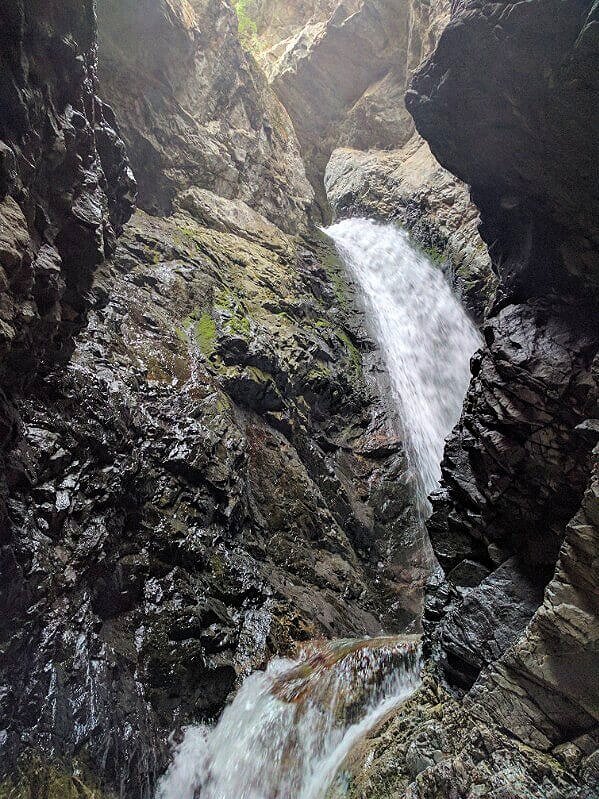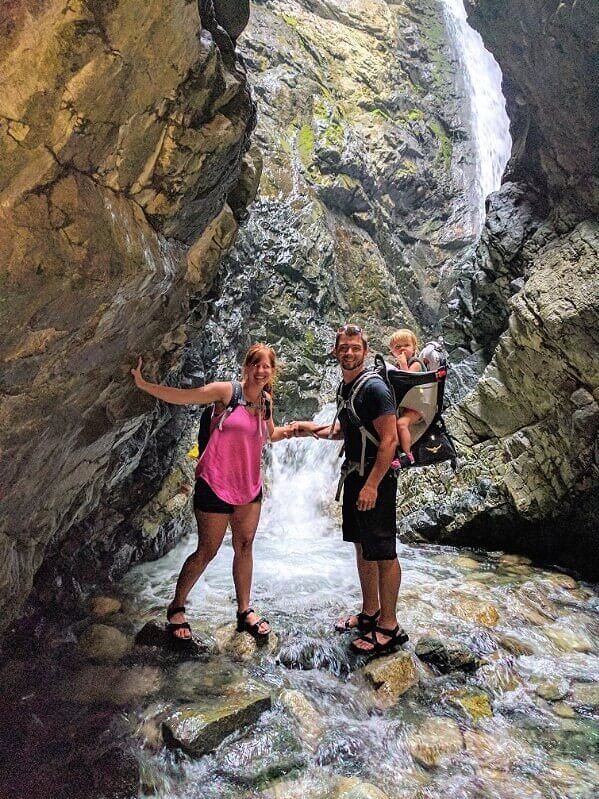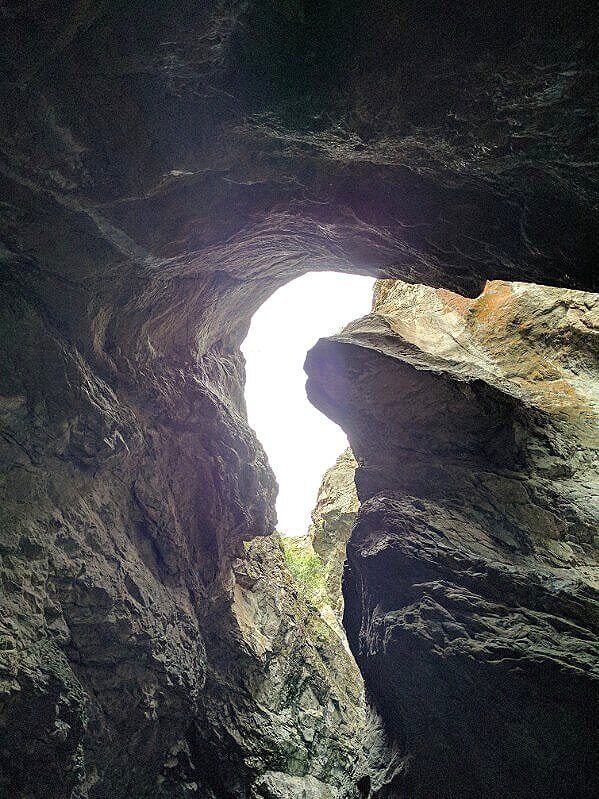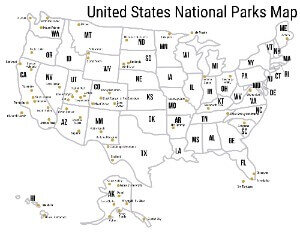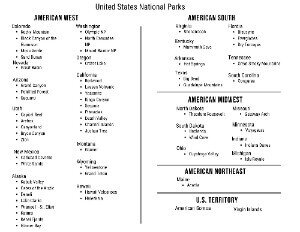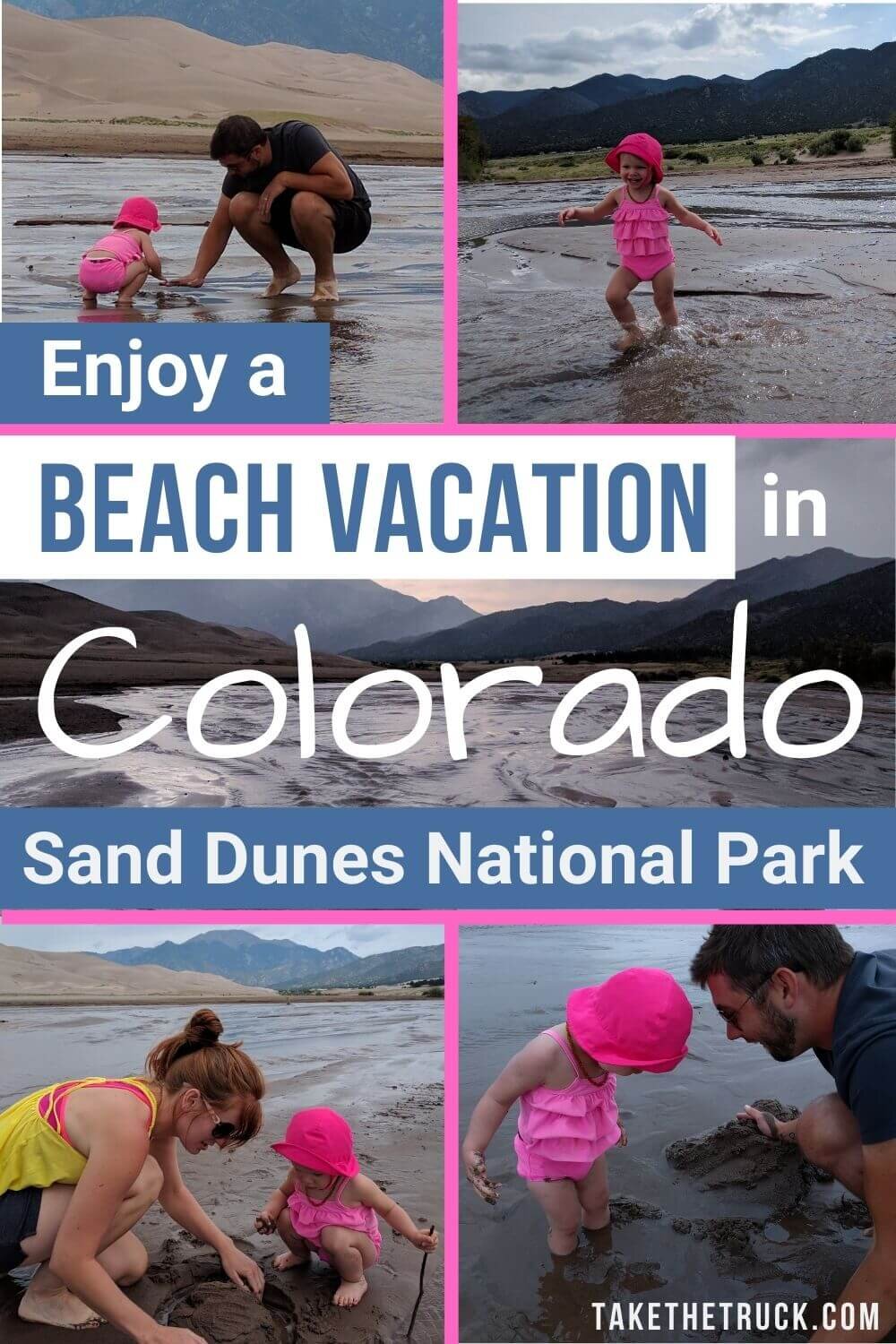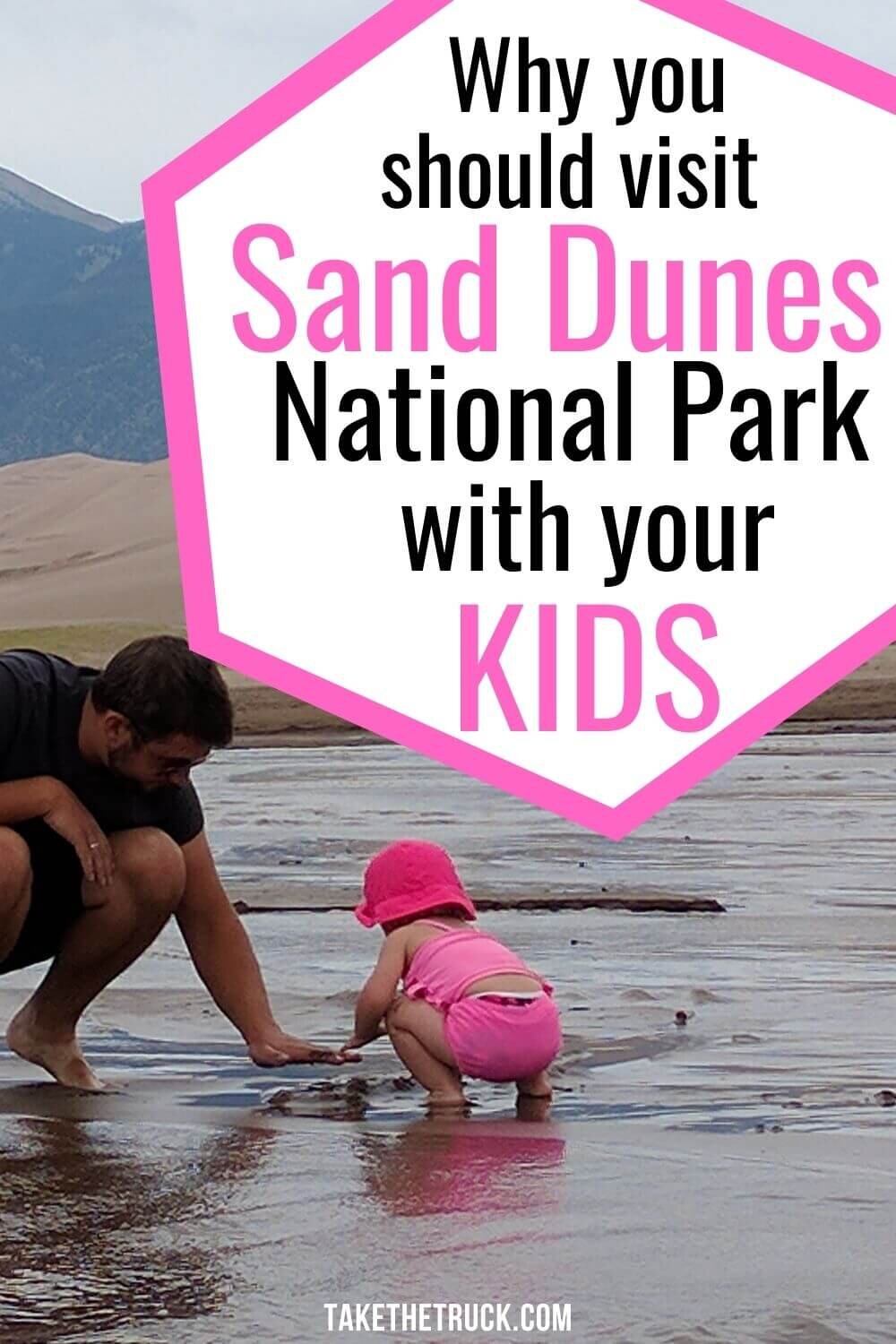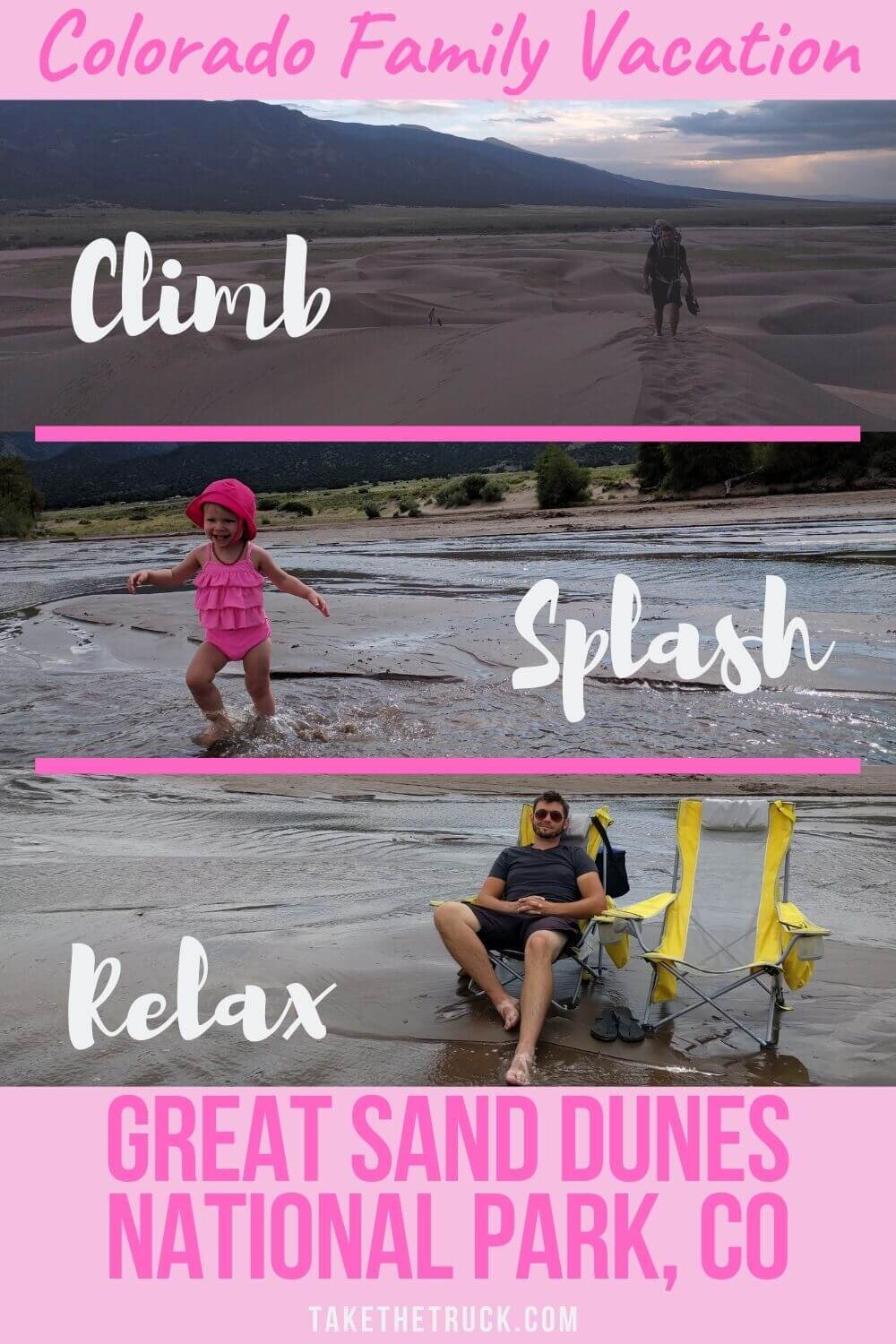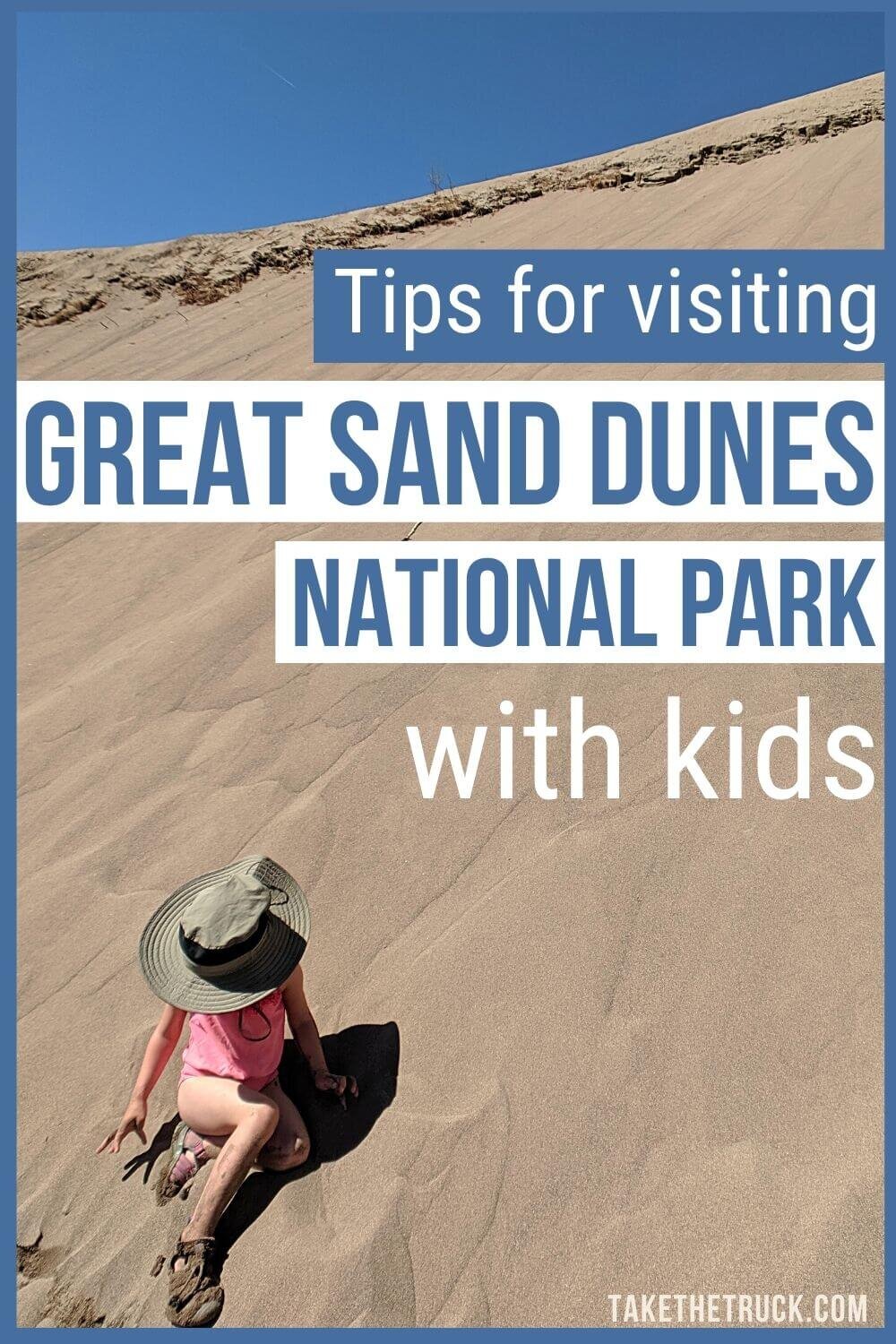Bucket List With Kids: Great Sand Dunes National Park
Great Sand Dunes National Park in south central Colorado is such a fun and easy national park to visit with kids!
Great Sand Dunes National Park and Preserve:
The park’s official name is Great Sand Dunes National Park and Preserve.
It consists of about 75,000 acres between the Great Sand Dunes Wilderness in the national park (lots of sand!), and the Sangre de Cristo Wilderness as a neighboring national preserve (lots of mountains!).
What this means for visitors is a huge variety of habitats and experiences all in one spot. Between freely exploring the dunes, dramatic sunrises and sunsets, hiking through diverse forests and mountains, splashing in Medano Creek - there are plenty of ways to enjoy this beautiful national park with kids of all ages.
Exploring The Sand Dunes:
Great Sand Dunes National Park contains North America’s tallest dune - Star Dune -which rises 750’!
When first approaching in your vehicle, however, they’ll all look tiny compared to the Sangre de Cristo Mountains that tower behind them.
But the moment you leave your vehicle and begin the climb up one of the dunes, you’ll quickly realize just how massive they really are!
A few tips for climbing the dunes:
Hike early in the day or closer to evening, especially if you visit during summer months. The sand surface can reach 140 degrees!
Be considerate of puppy pads! Their feet can burn too.
An uphill walk through sand is tough - so don’t think a mile walk is going to be easy breezy!
Look for washing stations around the park to rinse off sand.
Most recommend wearing closed toed shoes to protect your feet. We hiked in the evening and mostly carried our shoes, although our feet did start to feel tender.
Storms can quickly become dangerous when on the dunes so check the forecast.
Hydrate, and wear hats and sunscreen.
There aren’t any poisonous snakes or scorpions here, so relax! (But! Seven insect species live in the dunes but nowhere else in the world!)
Grab a few cups or kitchen utensils from your camp kitchen to extend the play time and creativity for little ones.
For older toddlers on up through adults, look into sandboarding before you go! If you already own something that will work, consider bringing it, as you wouldn’t have to work around established pick up and drop off rental times (plus you’ll save some money!). Rentals are available just outside the national park entrance.
Playing In Medano Creek:
Medano Creek runs along the base of the dunes, and you actually cross it to get to them.
It’s fed by melting ice and snow from the high peaks of the Sangre de Cristo Mountains, meaning there’s more of a guarantee you’ll enjoy some water play with your kids the earlier you visit in the spring and summer.
Although it usually runs dry in July, it can certainly flow later into the summer during heavy snowfall years.
During our early August visit, the creek was still flowing, and all three of us had a blast playing in this magical mix of soft sand and flowing water!
The water is clean, there are no sharp or slippery rocks, and no creepy sea creatures lurking about (sorry, ocean lovers!).
A few tips for exploring Medano Creek:
Grab a few cups or kitchen utensils again to extend the amount of play time for your little ones.
The creek is wide and really shallow - usually under 4 inches deep. But occasionally, there are deeper spots.
Older kids could enjoy tube riding or skimboarding during peak water flow (typically late May to early June). But know that the park is rather crowded during this time of year- especially on weekends.
Bring your camp chairs and relax!
Visit the National Park Service website before your trip for up-to-date information about Medano Creek’s water level, access to a webcam showing current conditions, and forecasts and predictions for upcoming weather and water levels.
Hiking Around Great Sand Dunes:
Hiking around on the dunes is an obvious place to start, and if you’re like us, only necessary to do once per visit!
However, there are lots of different kinds of hikes in the neighboring Sangre de Cristo Mountains.
The mountain range has multiple peaks that rise up over 13,000 feet above sea level, and established trails can help you explore the foothills, the peaks, and everything in between!
If you’re into forests and all the life they contain, you can walk through 7 different life zones here, seeing a huge variety of plants and animals.
Zapata Falls:
Zapata Falls is just 3 miles south of the national park entrance.
To get there you’ll head east on a dirt road at the Zapata Falls Recreational Area sign, and drive the bumpy road up for 3 miles.
Once parked, the hike takes you uphill a short half mile over rocky terrain on an established trail, then follows the creek bed that enters the cave-like chasm where you’ll see the 30 foot Zapata Falls.
A few tips for visiting Zapata Falls:
We would not recommend taking any low clearance vehicle on the 3 mile dirt road, although we did see multiple people doing that. Expect to drive around 10 mph and to spend about 30 minutes getting to the parking lot.
Plan to have your youngest adventurers in a hiking backpack, as the trail wouldn’t be easy for little feet to navigate and is sometimes slippery, as it crosses through and then up a swift but shallow (depending on the time of year) creek to get to the falls.
Wear shoes that have good traction and can get wet.
Camping at Great Sand Dunes National Park:
There are multiple camping options in and around Great Sand Dunes National Park. Here’s what’s available inside the park, plus a couple nearby options.
Camping Inside Great Sand Dunes National Park:
Pinyon Flats Campground - There are a total of 88 sites (about $20/night) with one loop being reservable and one loop being walk-in.
There are no hookups available, but there is a place for RVers to dump and fill their tanks in the park.
The sites are close to each other and most don’t provide any substantial shade, although there are small trees throughout the campground. Many sites have good views of the sand dunes and surrounding mountains.
Primitive Sites along Medano Pass Road - If you have a high clearance 4WD vehicle that can handle the drive up Medano Pass Road (we hauled a 5th wheel for this adventure), you’ll have access to 21 free primitive campsites.
Overnight Backpacking - Get your free but required backcountry permit from the Sand Dunes Visitor Center during regular business hours, and learn more about exactly where you can camp.
You can set up anywhere inside the 30 square mile dune field as long as you’re outside the day use area (which will require at least a 1.5 mile hike over sand), as well as along Sand Ramp Trail if you’d rather pitch your tent near the foothills and mountains.
Camping Outside of Great Sand Dunes National Park:
There are multiple private and public campgrounds around the national park to choose from. The NPS provides a great list, and here are details on two of the closest camping options.
Oasis Campground - This privately operated campground has all the amenities - from hookups, to laundry, a restaurant, and even cabin rentals. They also rent sand boards and sand sleds to use on the dunes!
It is located just outside Sand Dunes National Park entrance.
Primitive Sites at Zapata Falls Campground - There are 23 non-reservable sites spread out between two separate mile-long loops on BLM land just outside Great Sand Dunes National Park for $11/night. There are pit toilets, but no water is available.
The road up is rough and slow going, so even though it looks to be about 5 or 10 minutes from the national park, you’ll actually have closer to 35 or so minutes of drive time.
Great Sand Dunes is such a relaxing national park to visit with kids and family. The park’s compact size allows for more time to slow down (which we often forget to do while on vacation!), and to play, relax, and explore while really taking in the uniqueness and beauty of the area.
And if you’re in the area already, be sure to check out Black Canyon of the Gunnison National Park.
As always, thanks for reading! And please SUBSCRIBE to get blog posts sent right to your inbox!
Print our free National Parks Map and List!
Related Posts:
Want to come back to this post later? Save it to Pinterest!
Please share this post with others!
Click the links below!

